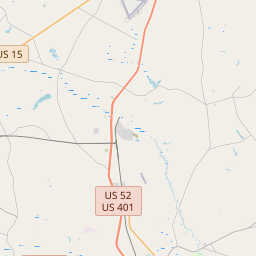Coker's Pedigreed Seed Company /Coker Experimental Farms
Historical marker location:
Hartsville, South Carolina
( Marker is on South Fourth Street near South Carolina Highway 15, on the left when traveling east.)
Marker installed: 2011







© OpenStreetMap contributors
The Cherokee Indian Removal Memorial, located in downtown Greenville, honors the memory of the Cherokee people who were forced to leave their homes in the state and walk the Trail of Tears to Indian Territory in present-day Oklahoma.
About Darlington County
Darlington County Timeline
Darlington County, located in the northeastern part of South Carolina, has a rich and diverse history dating back thousands of years. The region was originally inhabited by indigenous peoples such as the Pee Dee and Catawba tribes. European exploration and settlement began in the 1700s, with the establishment of trading posts and small settlements along the Great Pee Dee River.
In the late 18th century, Darlington County was officially formed in 1785, named after Darlington, a town in England, by an act of the South Carolina General Assembly. The county quickly grew in population, largely due to the agricultural potential of the area. Cotton became the primary cash crop, and plantations flourished, utilizing enslaved labor.
During the American Civil War, Darlington County played a significant role. It was the site of several battles and skirmishes as Union troops attempted to disrupt the Confederate supply lines along the railroad. Notable events include the Battle of Hartsville in 1862 and the destruction of the town of Darlington in 1865.
In the late 19th and early 20th centuries, Darlington County experienced economic growth and modernization. The railroad expanded, connecting the county to larger cities like Charleston and Florence, and improving transportation of goods and people. Agriculture remained vital, but industries such as timber, tobacco, and textiles also thrived, drawing immigrants and creating jobs.
Today, Darlington County continues to be a diverse and vibrant community. It is known for its thriving agricultural sector, especially in the production of tobacco, soybeans, and cotton. The county also celebrates its history through various festivals and events, preserving and honoring its heritage. Darlington's rich past, combined with its present-day progress, makes it an exceptional place to live and visit.
In the late 18th century, Darlington County was officially formed in 1785, named after Darlington, a town in England, by an act of the South Carolina General Assembly. The county quickly grew in population, largely due to the agricultural potential of the area. Cotton became the primary cash crop, and plantations flourished, utilizing enslaved labor.
During the American Civil War, Darlington County played a significant role. It was the site of several battles and skirmishes as Union troops attempted to disrupt the Confederate supply lines along the railroad. Notable events include the Battle of Hartsville in 1862 and the destruction of the town of Darlington in 1865.
In the late 19th and early 20th centuries, Darlington County experienced economic growth and modernization. The railroad expanded, connecting the county to larger cities like Charleston and Florence, and improving transportation of goods and people. Agriculture remained vital, but industries such as timber, tobacco, and textiles also thrived, drawing immigrants and creating jobs.
Today, Darlington County continues to be a diverse and vibrant community. It is known for its thriving agricultural sector, especially in the production of tobacco, soybeans, and cotton. The county also celebrates its history through various festivals and events, preserving and honoring its heritage. Darlington's rich past, combined with its present-day progress, makes it an exceptional place to live and visit.
Darlington County Timeline
This timeline provides a glimpse into the major events and milestones that have shaped the history of Darlington County, South Carolina.
- 1730: Land in the area now known as Darlington County was purchased from the Cheraw Indians by a group of settlers.
- 1785: The town of Darlington was established and named after Darlington in England.
- 1791: Darlington County was officially formed and named after the town.
- 1800s: The county saw significant economic growth with the rise of cotton plantations and the construction of the Cheraw and Darlington Railroad.
- 1865: Darlington County was heavily impacted by the Civil War, experiencing battles and devastation.
- 1871: The South Carolina General Assembly established Darlington County's current boundaries.
- Late 19th-early 20th century: The county transitioned from an agricultural economy to a more diversified economy with the growth of industries like tobacco and textiles.
- 1990: The Darlington Raceway, a famous NASCAR track, was added to the National Register of Historic Places.